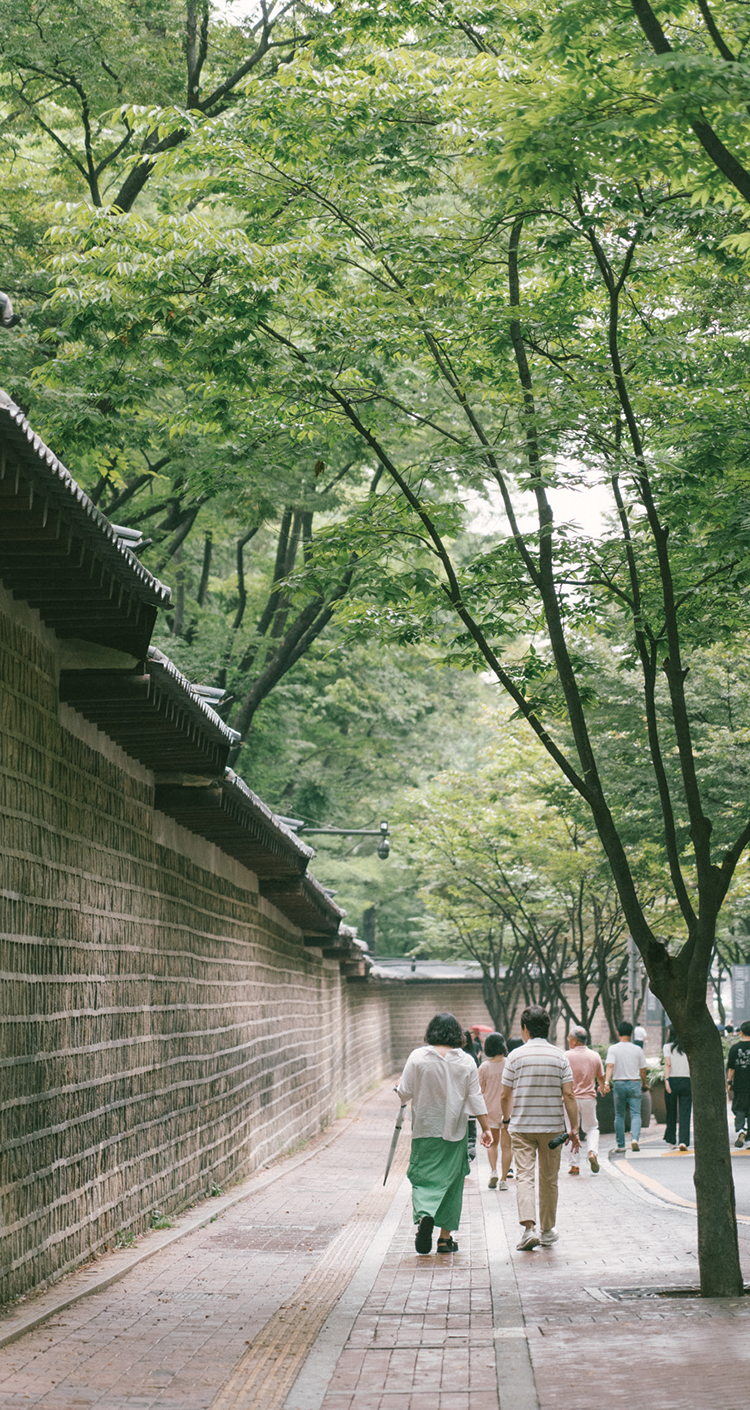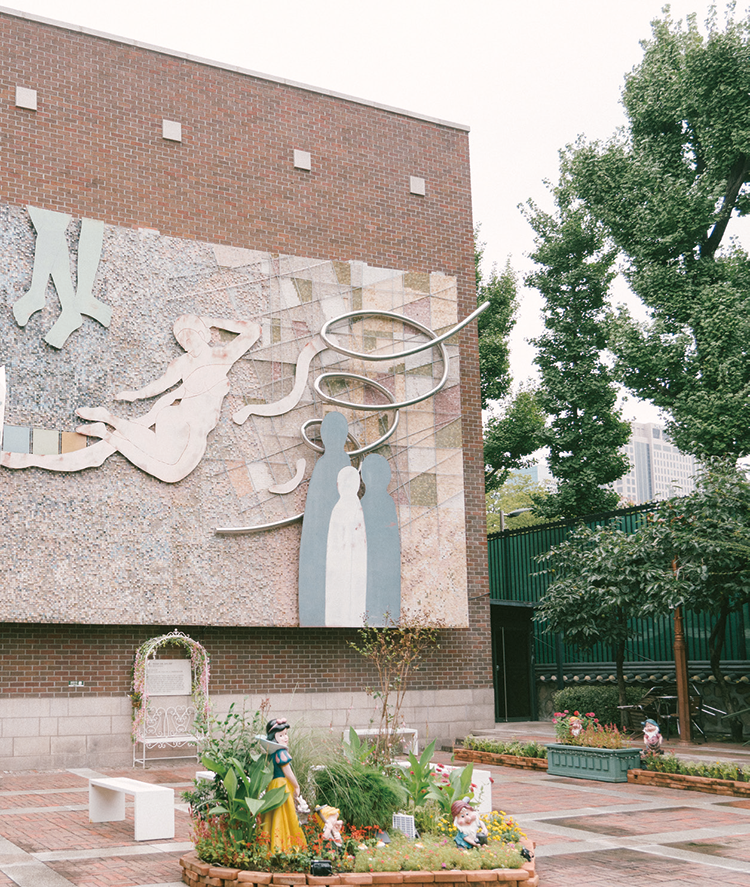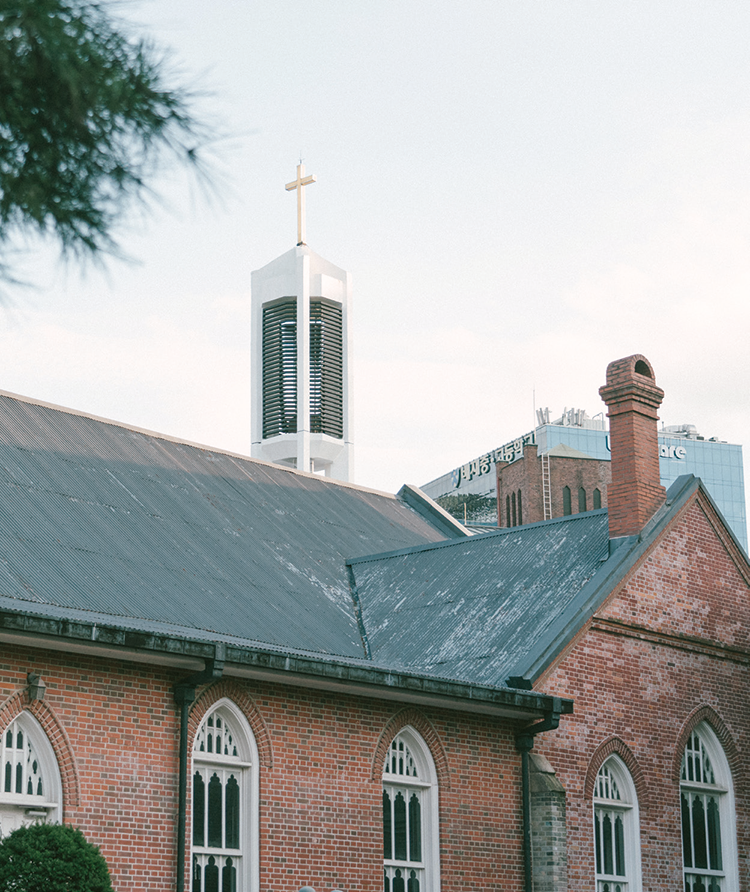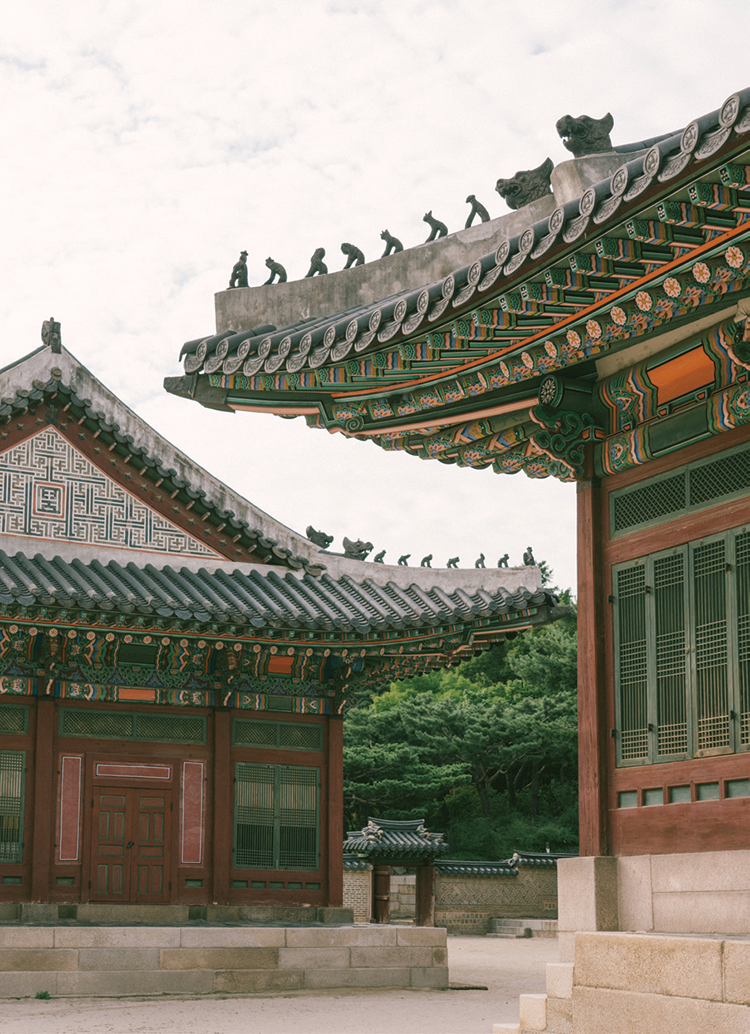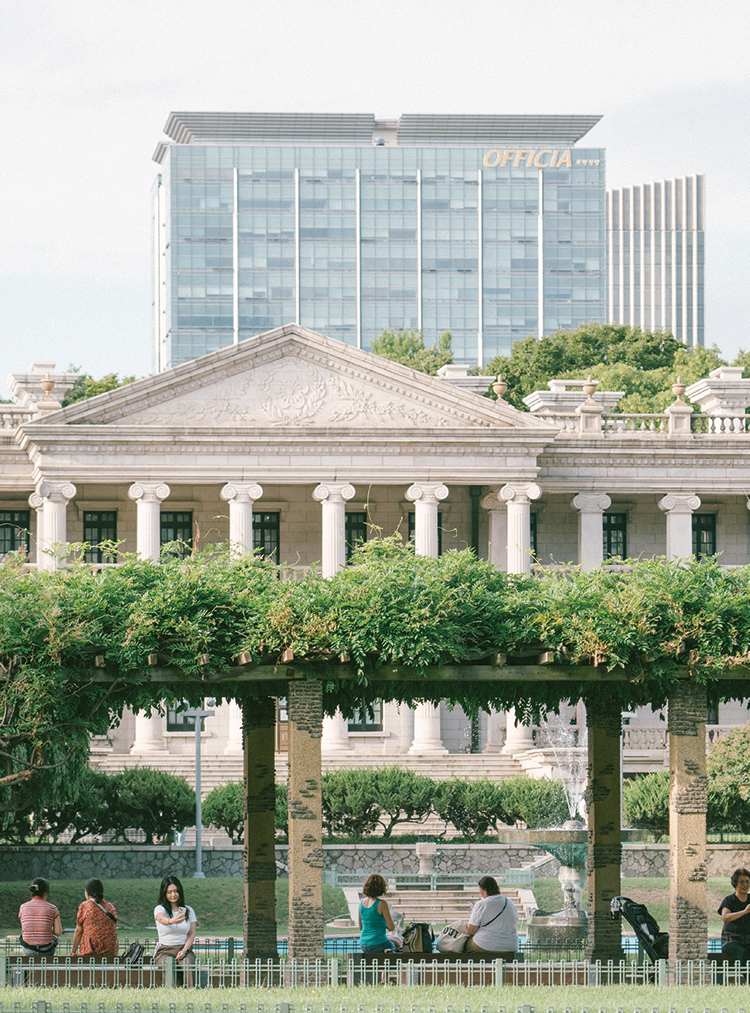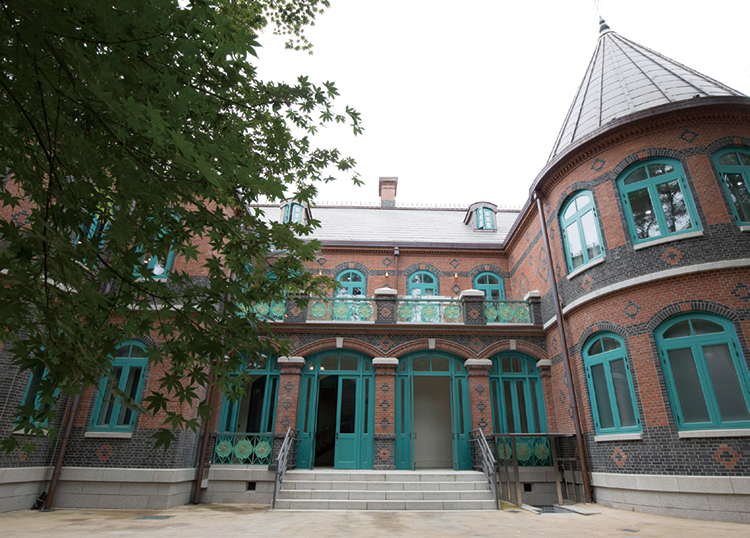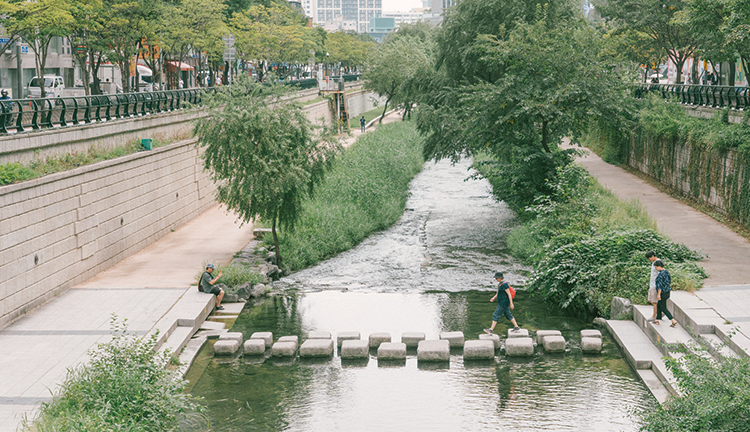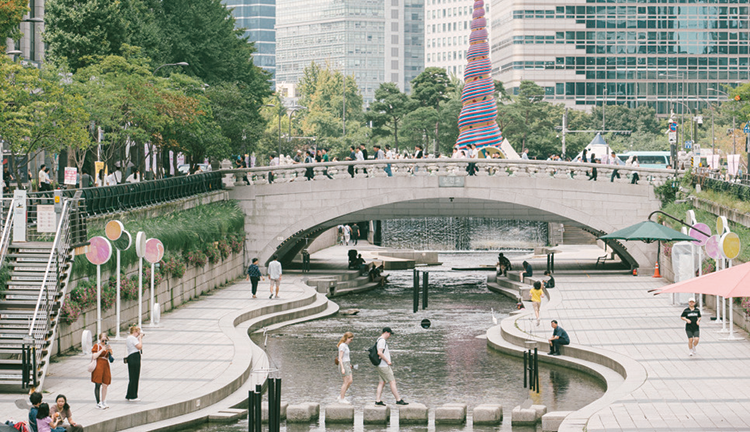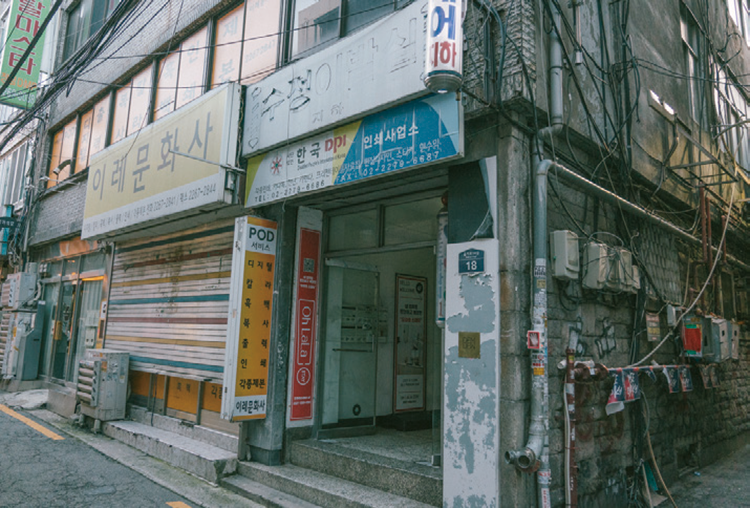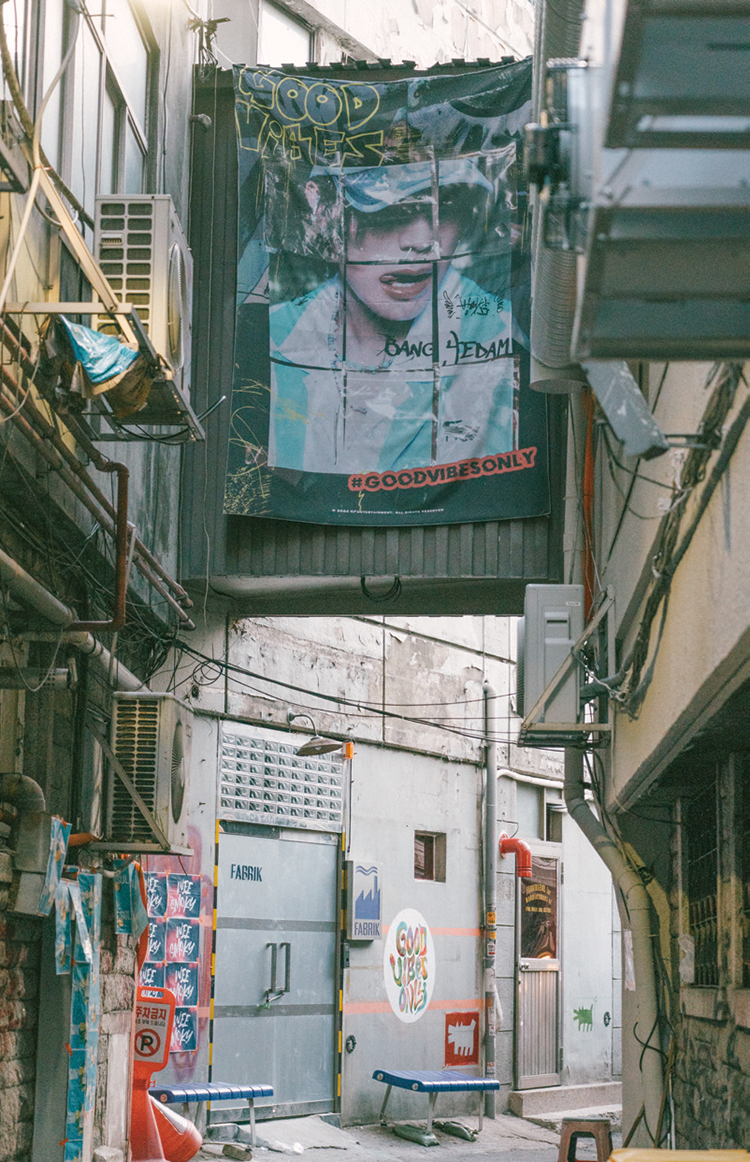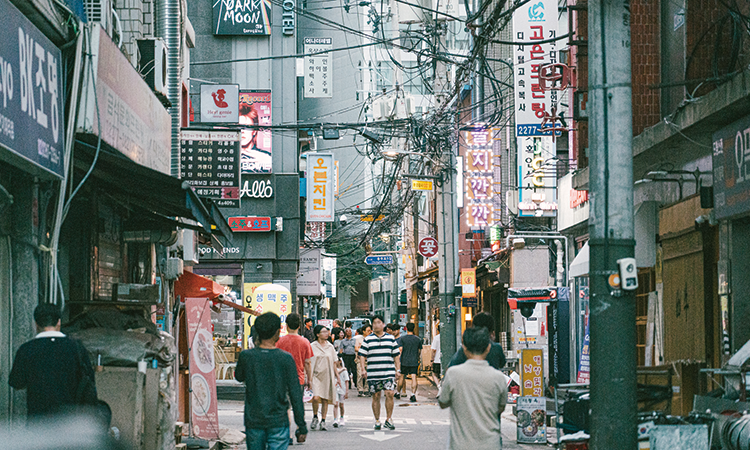Likely to Revisit
Old Alleys Where the Sun Shines Brightly
Seoul
50 years after K-water moved from Seoul to Daejeon, a visit to Jeongdong-gil where its head office was located shows how time has changed so many things over the years in this section of Seoul where history coexists in the midst of the modern landscape. A walk from Deoksugung Palace along Cheonggaecheon Stream to Euljiro would be a great idea on a sunny, cool autumn day.
📝Text by. Na-yeong Bae / 📷Photos by. Ji-hyeon Hwang
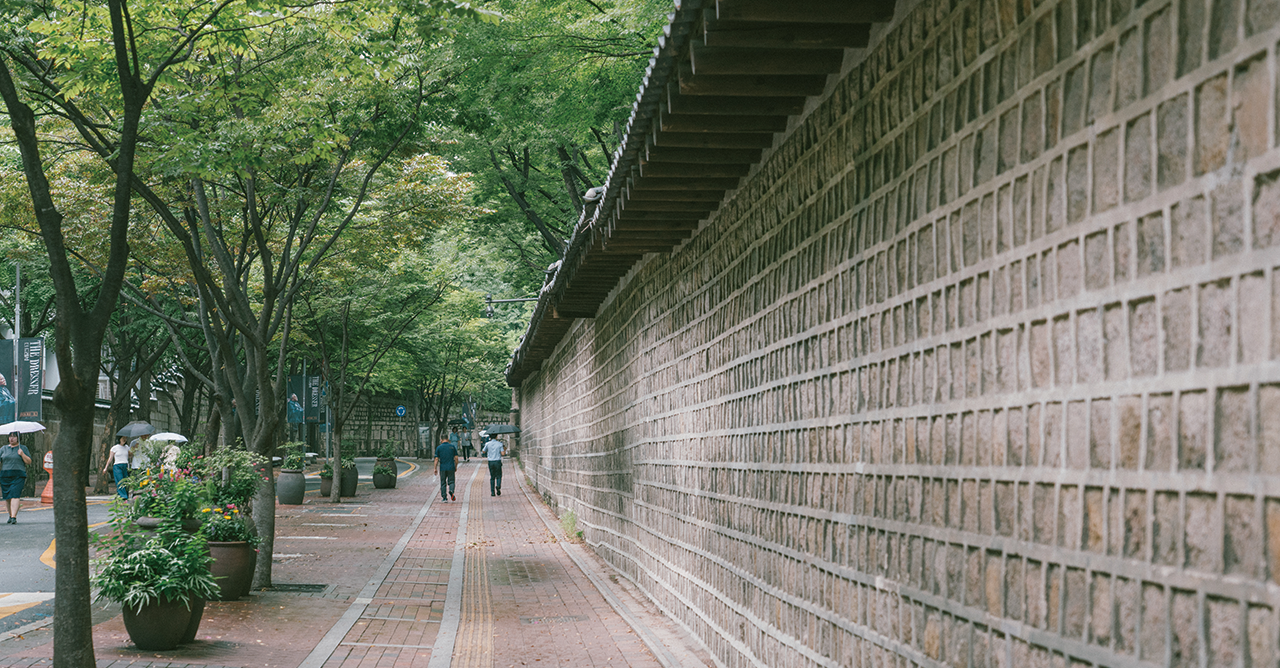
Jeongdong Street
Take a Leisurely Stroll on the Path of Time
You will likely find yourself humming the song “Gwanghwamun Love Song” as you walk on Jeongdong Street with tree leaves gently fluttering in the wind. Soon, your thoughts may shift to blue-eyed foreigners who might have walked on this street along Deoksugung Stone Wall Walkway. This area was called the Street of Legation because major Western countries opened their legation here, following the establishment of the American legation at the end of the Joseon period. Founded over 100 years ago, Jeongdong Church still stands in the area; Wongaksa, the first modern theater in Korea renamed National Jeongdong Theater of Korea, still welcomes visitors at its original location. The first coffee shop in Korea opened as well in Jeongdong. Foreign diplomats dispatched to Korea back then frequented the coffee house to get a hot cup of coffee that would perk them up, and even King Gojong often visited this coffee place to get his cup of coffee. The aroma of coffee continues to fill the alleys in Jeongdong between old buildings that attest to the modern history of Korea.
One of the best locations where you can start a walk on Jeongdong Street is Hwangudan, Jaecheondan Altar behind The Westin Chosun Seoul, where the emperor performed rituals to the god of heaven. The walking path includes major historic landmarks of Seoul including Daehanmun Gate of Deoksugang Palace, Seoul Museum of Art, Chungdong First Methodist Church, Jungmyeongjeon of Deoksugung Palace, and finally the Road of King Gojong.
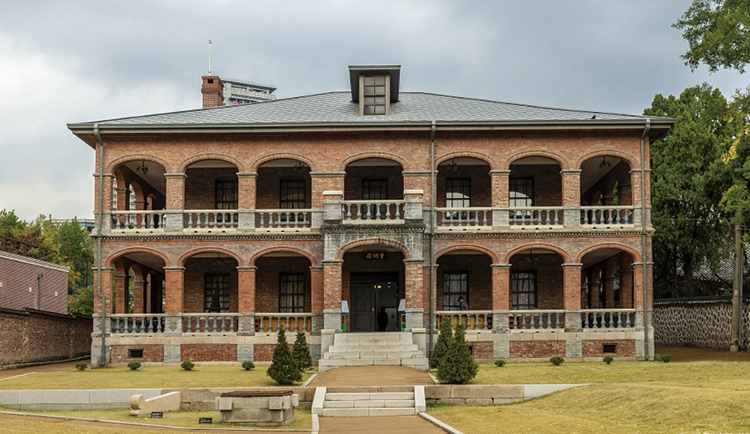
ⓒSeoul Tourism Foundation
Deoksugung Palace
The Last Palace of the Joseon Dynasty
In the cool autumn breeze, a wind chime hanging from the eaves of the royal palace trembles. The wind chime seems to be whispering stories of Deoksugung Palace as it makes gentle and calming sounds. Deoksugung Palace is a living testimony of Korea’s modern history as it has witnessed the declaration of the Daehan Empire by King Gojong, the sorrowful years under the Japanese colonial rule, and the birth of the Republic of Korea. Walking past Daehanmun Gate located at the center of Seoul, you step into Deoksugung Palace, with the imposing building of Junghwajeon greeting you. You can imagine what the daily life of the royal family might have been like as you walk in the front yard of Junghwajeon. What comes into view next is Seokjojeon, a Western-style building that embodies the yearning for modernization during the period of the Daehan Empire. At Jeonggwanhun, you can easily imagine how King Gojong struggled to embrace the waves of modernization.
Deoksugung Palace is easily accessible from City Hall Station on the subway. Touring the palace does not take so long as it is not a huge palace, but if you plan to visit Daehan Empire History Museum and National Museum of Modern and Contemporary Art, you need to plan a longer trip. If you visit the palace in hanbok, or traditional Korean costume, admission is free.
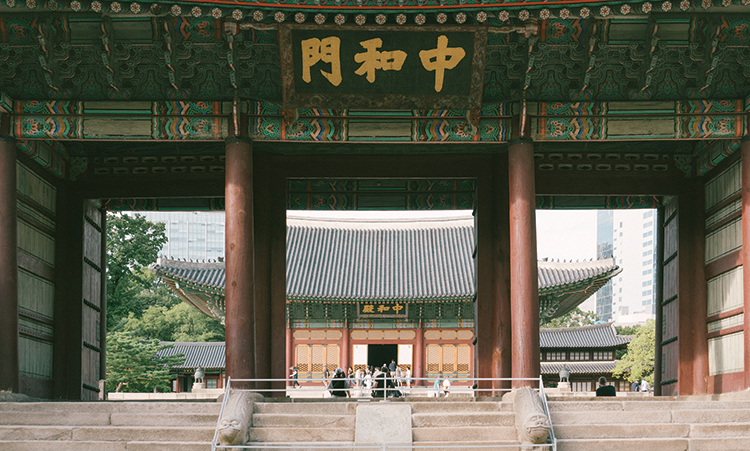
Cheonggyecheon (Stream)
The Changing Waterway in Seoul
The cooling water spouts gushing from the fountain at Cheonggye Plaza signal the beginning of Cheonggyecheon (Stream). Looking at the water flowing so freely in the stream, it is hard to imagine that the stream had been dry and silent, buried under the overpass running through the area. It is such a transformation indeed! Couples walking along the waterway and sounds of kids’ laughter overlap people crossing Gwangtong Bridge in the Joseon period. Artworks are on display on supyoseok, or stones set up to measure and indicate the level of water across Cheonggyecheon (Stream), incorporating the elements of a modern city. In this part of Seoul, traditional marketplaces and modern shopping malls coexist and old buildings and skyscrapers stand in harmony, creating a unique landscape. In the wake of the Korean War, refugees gathered and formed a shantytown along the stream, but today, it has transformed into an ecological stream and become a symbol of urban regeneration where catfish and loaches swim, and mallard ducks and grey herons flock together.
If you choose to walk along Cheonggyecheon (Stream) that runs through the heart of Seoul, you can check out Cheonggye Plaza and Dongdaemun Design Plaza on the way. Moreover, there are many fun places to visit along the way, including must-visit restaurants in Euljiro 3-ga, Sewoon Plaza and Jongmyo Shrine in Jongno 3-ga, and Gwangjang Market and Dongdaemun Market in Jongno 5-ga.
Euljiro
The Transformation of Alleys in the Industrial Era
Euljiro was once the industrial center of Seoul where factories and stories were concentrated. The small, narrow alleys in this area used to be filled with printing shops, lighting stores, and metal factories that had operated there for decades, stuck in the memories of past glory, but the alleys started to go through transformation and turned into a uniquely charming place. Young artists and entrepreneurs started to nestle between old factory buildings and opened cafes, bars, and galleries. Colorful neon signs began to light up the alleys, and murals on the old buildings breathed fresh life into the desolate urban landscape. Known by its nickname “Hipjiro,” Euljiro has emerged as a new hot place with the famous Nogari Alley drawing young people looking for hip places with unique colors to the area. As you walk around in the alleys, you will increasingly find that cafes, shops, and other fun places present an unlikely mix and match with the old town of Euljiro as backdrop. The true attraction of Euljiro lies in the philosophy of coexistence that preserves the existing industrial ecosystem and creates new values at the same time.
If you are interested in discovering what the old alleys in Euljiro really look like, you can start your walk from the back of Bangsan Market and continue on until you get to Sewoon Plaza. Eunjoojeong, Bogunok, and Wooraeok are still running in the area.
The original nogari (dried young pollack) house Eulji OB Bear and Mansun Hof, two major beer bars in the area, constantly competed for market dominance, and I was relieved that the original nogari beer place was still in business after all those years, only at a new location nearby.

